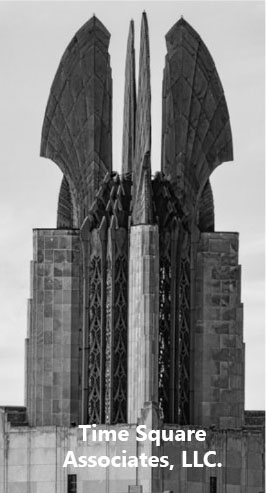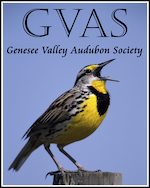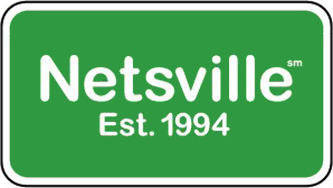Tips for Watching the Falconcam
With the hatching of the eyases we’re moving into one of the most active periods of watching the Rochester Falconcam. Each year we get a lot of questions and comments from viewers about the activity (or lack of it) in the nest box. We’d like to offer a few tips for viewing the website over the next few weeks so that you can make the most of your experience.
Scientists have a saying: “If you hear hoofbeats, think horses, not zebras”. It’s a good rule of thumb when observing these falcons. In other words, if you see something “unusual” in the nest box, think of all the possible explanations then choose the simplest one.
EXAMPLE: An eyas has been in the same spot for a long time, and doesn’t appear to be moving. Is the eyas sleeping or is it dead?
In the overwhelming majority of cases, the eyas is just asleep. In one of my recent articles we talked about the fact that the eyases will spend a lot of their time sleeping or just laying around the nest box. It’s easy to look at the cameras, not see one of the eyases moving, and assume that something bad has happened. The good news is that it’s almost never true! Often when they’re napping they’ll flatten themselves out on the floor of the nest box, looking a bit like falcon pancakes! Other times they’ll huddle together in a big eyas blob so that it’s hard to tell where one chick ends and another begins. As they get older and more mobile, they’ll also do things like crawl on top of each other. All of these things can be mistaken for a problem with one or more of the eyases. It may look like an eyas hasn’t moved in a long time, or that one hatchling is being smothered by another, but what you aren’t seeing is all the activity that happens between the individual pictures you see on the website.
ANOTHER EXAMPLE: All the eyases get fed except for one. Is the eyas sick, starving, or is something else going on?
Most times all of the eyases will beg whenever an adult comes into the nest box, especially with food. But like everything else, there are exceptions. Sometimes an eyas will get fed quickly, or it will have received a recent feeding, and it just won’t be hungry. In that case it may not bother to beg. Eyases like to eat, but they can survive quite a long time without food, so if you don’t see all of the eyases get fed each time Mariah or Kaver arrives with prey, don’t worry– they’ll most likely get fed within a few hours.
It’s important to remember that the cameras show only one image each minute or so, and those images represent only a fraction of a second in these birds’ lives. So in reality, there’s a lot of action that you don’t see. Sometimes it looks like nothing’s happening in the nest box, when in reality there is a lot of movement– it’s just that the camera freezes the action and only catches snippets, so most of the activity isn’t apparent. It’s natural to be concerned about the eyases, but you can rest assured that we’re monitoring the nest box carefully, and if we see anything wrong, we’ll respond appropriately. We’ll also keep all of our viewers informed of any problems in the nest box.
Here’s a final piece of advice. If you think there’s a problem with one of the eyases, the best thing to do is wait a while. Check back in an hour (or even 2 or 3!) to see if the eyases have changed position. Above all, try to avoid jumping to conclusions. In ten years, we’ve only had two eyases die in the nest box. Both of those happened last year, when Mariah was injured and couldn’t care for the newly hatched falcon chicks properly. This year she’s in top form, and keep in mind that she’s raised families for ten years running, so you can feel confident that she knows what she’s doing.







May 10th, 2007 at 1:58 PM
Thanks for the wonderful tips for watching the family.. I just returned from work and thought we would see number four but I think he/she must be a little shy!! I notice that Mariah is usually sitting with the chicks. Does Kaver ever take over or is he always out looking for dinner or or just hiding out?
Waiting for number four!!
May 10th, 2007 at 2:18 PM
Seems like M&K feed the eyases fresh kill and not regurgitated food. Is that correct?
May 10th, 2007 at 3:04 PM
Hello Jess,
Thanks for the reassurances! It’s hard to remember to let Mother Nature (aka Mariah & Kaver) take care of things. I’ll bet often M&K know so much more than we do!
I was wondering, other than the number of years we’ve watched Mariah, do we have any idea how old she is? And how many years can she keep having babies? It’s so gratifying to see the couple return year after year & be so successful at family-raising. Nature is so remarkable!
Thanks for all the input.
May 10th, 2007 at 3:31 PM
Mariah is such a good mommy.
Thank you so much for all the wonderful updates!
May 10th, 2007 at 4:31 PM
While keeping tabs on the falcons, I am also enjoying watching a pair of nesting hawks in the woods behind my house in Brockport. I can’t identify them, however. The male does not stay around much except at dusk when I assume he is bringing food to sitting female. By watching what is happening in the lives of the facons, I’m guessing that there will a hatch soon for these hawks.
May 10th, 2007 at 4:36 PM
I see four as of 4:30 p.m. Mom left the nest to give us a peek!
May 10th, 2007 at 4:36 PM
Yay!! Four babies!
May 10th, 2007 at 4:38 PM
I would like to make a suggestion for in the future…especially at this time of year, as you said, when the falcons are the most active…I would love to see a instant live cam installed so that we can actually watch their movements and not just snap shots every minute or two. Hope you might consider this option at some point…thanks for all the knowledge and enjoyement I am getting, however, from the cams!
May 10th, 2007 at 4:51 PM
WE HAVE FOUR!!! Break out the icecream and brownies!! God Bless the feathered friends!
May 10th, 2007 at 6:34 PM
I am so thankful for the collaboration that allows us to continue to keep track of this wonderful bit of urban nature. I am thrilled that Mariah and Kaver have once again hatched four eyases, and will check back often to watch them grow and flourish.
A few years ago, I was very worried about one tiny eyas that hatched quite late. I was certain he was too small and weak, and was not getting enough food. Turned out all my worrying was misplaced, he grew and thrived, and I believe he was the first to fledge (fly).
I’m sure there’s a few people out there smiling at the memory of my “wee one”, that everyone else called “Hammy”.
May 10th, 2007 at 6:53 PM
Congratulations Mariah & Kaver on a job well done!!!
Now that all the babies have hatched will someone try to band them and if so—when?
Just how does one band a falcon in the wild? What happends with the nest box after the eyases take flight. Do you shut down the camers? I’m fascinated with this new site that I have found. Thanks for the wonderful imprints that you provide.
May 14th, 2007 at 12:40 PM
I would like to bring by son downtown to try and catch the fledgings taking their first flight. When can we expect that to happen?
May 14th, 2007 at 3:10 PM
@Carol L – Kaver does take his turn keeping the hatchlings warm, but as with brooding, Mariah does most of this work, while Kaver does the majority of the hunting.
@L J – The eyases are fed small pieces of meat that the parents tear from the body of the prey. They don’t regurgitate food for the hatchlings.
@Carol M – We have no way of knowing Mariah’s actual age, but we think she’s about 12 years old.
@Sandy – The eyases will be banded when they’re about 3 1/2 weeks old by wildlife technicians from the New York State Dept. of Environmental Conservation. Banding in the wild is done only when it’s possible to access the nest. Since Peregrines nest on cliff faces and other such places, it is often hard to get to them, so young at these nest sites may not get banded.
@Joanne – The eyases will take their first flights at about 6 weeks of age. Look for more information in an upcoming Imprints article.
June 17th, 2007 at 2:36 PM
it looks like another is about to try to fly